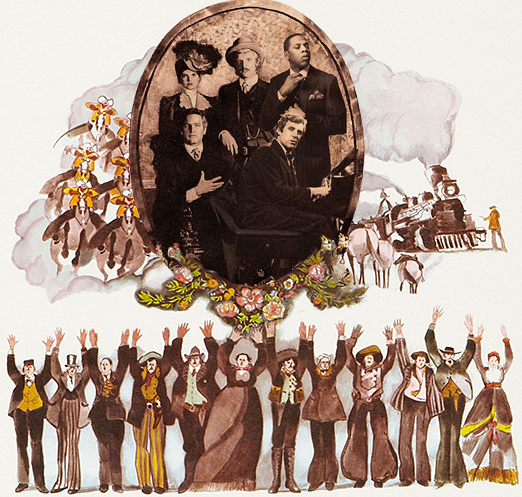 In his excellent book on the Trinity, Fred Sanders makes a number of key observations related to seeing (and not seeing) the Trinity in the Old Testament. (This subject takes up the whole of chapter 8 in The Triune God).
In his excellent book on the Trinity, Fred Sanders makes a number of key observations related to seeing (and not seeing) the Trinity in the Old Testament. (This subject takes up the whole of chapter 8 in The Triune God).
 should not begin with the Old Testament. Because the doctrine is revealed in the historical events of the Incarnation and Pentecost, not the propositions of the text, we must begin with the events recorded in the New Testament, not the hints contained in the Old. Sanders rightly corrects strictly chronological approaches to the Trinity: “The root idea of revelation is not verbal announcement but the unveiling or disclosing of something that has been present, though concealed. . . . The triunity of God was revealed when the persons of the Trinity became present among us in a new way, showing up in person and becoming the object of our human observation” (40).
should not begin with the Old Testament. Because the doctrine is revealed in the historical events of the Incarnation and Pentecost, not the propositions of the text, we must begin with the events recorded in the New Testament, not the hints contained in the Old. Sanders rightly corrects strictly chronological approaches to the Trinity: “The root idea of revelation is not verbal announcement but the unveiling or disclosing of something that has been present, though concealed. . . . The triunity of God was revealed when the persons of the Trinity became present among us in a new way, showing up in person and becoming the object of our human observation” (40).From hermeneutical commitments like these, Sanders helps us get our bearings on reading the Old Testament. In fact, his chapter on reading the Old Testament retrospectively is one of the best I’ve read on grasping the theological unity and eschatological development of the Bible. For these reasons, I would highly recommend his book, especially if you struggle to see how grammatical-historical exegesis relates to the whole Bible.
Re-Reading Isaiah 61More broadly, his observations lend credence to reading Isaiah 61:1–2 as an adumbration of the Trinity, which is what led me to reading his chapter.
In Isaiah 61, we find the second of four “Spirit songs” in Isaiah 59–63. Verses 61:1–3 read,
The Spirit of the Lord God is upon me, because the Lord has anointed me to bring good news to the poor; he has sent me to bind up the brokenhearted, to proclaim liberty to the captives, and the opening of the prison to those who are bound; 2 to proclaim the year of the Lord’s favor, and the day of vengeance of our God; to comfort all who mourn; 3 to grant to those who mourn in Zion— to give them a beautiful headdress instead of ashes, the oil of gladness instead of mourning, the garment of praise instead of a faint spirit; that they may be called oaks of righteousness, the planting of the Lord, that he may be glorified.
These are the words Jesus quotes in Luke 4:18–19 and applies to himself, “Today this Scripture has been fulfilled in your hearing” (v. 21). As most (all?) commentators have noted, however, Jesus truncates the quotation in order to stress the comfort he is bringing his people. In Luke 4, he says nothing of “the day of vengeance.” As he makes clear, he has not come to bring judgment (yet), but salvation. Christologically, Jesus’ reading of Isaiah 61 clarifies why he has come. Hermeneutically, Jesus models a prosoponic (personal) reading of Isaiah 61.
That is to say, from the light of the New Testament, we can and should read the first person singular in Isaiah 61 as a referent to Jesus Christ. Just as Phillip answers the Ethiopian eunuch’s question about Isaiah 53 with an explicit testimony to Christ (Acts 8:34–35), so Jesus teaches us to see him as the Spirit anointed messenger of Isaiah 63. Thus, we should read this passage accordingly,
The Holy Spirit is upon the Son, because Father has anointed the Son to bring good news to the poor; the Father has sent the Son to bind up the brokenhearted, to proclaim liberty to the captives, and the opening of the prison to those who are bound; to proclaim the year of the Lord’s favor, . . .
In this reading, the Son is mentioned three times, the Father twice, and the Spirit once. Appropriately, this fits the stress of the whole Bible, where the Son becomes the centerpiece of God’s redemptive and revelatory work. By the same token, the Spirit is the most silent member of the Trinity (see John 14–16), and thus is mention only once.
Still, there is reason to believe the Spirit is also present in more than his singular mention in verse 1. Look at all that the Son brings to the broken-hearted captives: the message of the good news leads to binding up broken hearts, liberating captives, and comforting all who mourn. Are not these the things which the Spirit effects? Indeed, the outpouring of the Spirit upon God’s new covenant people is what makes the difference between the old and new covenants. Therefore, while the Spirit is only named once in Isaiah 61, it is clear the work of the Spirit is manifested throughout.
Just as John will say, “The wind blows where it wishes, and you hear its sound, but you do not know where it comes from or where it goes. So it is with everyone who is born of the Spirit” (3:8), the Spirit is seen in his effects. Thus, the seven infinitives of this passage show how the Spirit is present. And thus we could bold all the effects as the work of the Father and the Son, accomplished by the Spirit.
If this reading holds up, we might also see something of a chiastic structure in Isaiah 61.
The Holy Spirit
is upon the Son,
because Father
has anointed the Son to bring good news to the poor;
the Father
has sent the Son
to bind up the brokenhearted, to proclaim liberty to the captives, and the opening of the prison to those who are bound; to proclaim the year of the Lord’s favor [by the Spirit].
Once again, if this reading has any merit, it centers the work of the triune God on the mediating person of the Son, all the while affirming the inseparable operations of the triune God. This is the way Ephesians 1 explicitly speaks of the Father, Son, and Spirit. And thus, it is not surprising, that we might find something similar in the book of Isaiah, on which Ephesians depends greatly.
Even if this chiastic structure does not hold, the point of reading Isaiah in light of the New Testament certainly does. How can we read this passage which our Lord quotes and not learn something of the way in which he and his disciples read and interpreted the Bible. Indeed, as Sanders observes the importance of reading the Bible as a unified revelation about the triune God is massive, for without it we have good reason to believe, “that the doctrine of the Trinity would never have arisen on the basis of the Old or New Testaments in isolation” (220, citing Kavin Rowe).
Seeing the Trinity in the Light of the New TestamentAll in all, this reading of Isaiah models for us the potential of reading Scripture theologically and with awareness of the Triune God who redeems and reveals. Indeed, to only read Isaiah 61 in its original context, without consideration for the New Testament, misses the riches found therein. Likewise, it fails to learn from Jesus how to read Scripture. And most of all, it misses a key passage which reveals retrospectively the glory of our triune God.
For all these reasons and more, may we read and reread the Old Testament with our eyes open for the glory of the Triune God. And may God by his Spirit open our eyes to see the glory of Christ which in turn leads us to the Father.
Soli Deo Gloria, ds
Photo by Dawid Sobolewski on Unsplash
Share this:





